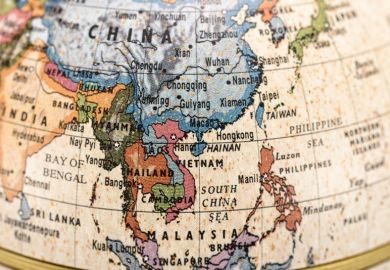Since the initiation of the Belt and Road project in 2013, China has not only been investing in infrastructure, finance and trade, but has been facilitating higher education collaboration with the countries and regions along the so-called New Silk Road (NSR).
The number of international students coming to China from these areas has increased rapidly. According to data from the Chinese Ministry of Education, they accounted for about 65 per cent of China’s nearly 500,000 inbound international students in 2017 and 2018. Before the NSR, the largest number of unbound international students came from South Korea, followed by the US, Japan, Thailand and Russia. In 2018, South Korea continued to be the largest source, but Pakistan and India have joined Thailand and the US as the next largest.
Since 2015, there has also been a sharp rise in the number of alliances between Chinese universities and those on the NSR. There are currently more than a dozen of these. The earliest and largest is the University Alliance of the NSR, which was established by Xi’an Jiaotong University. By focusing on the discipline of law, the alliance aims to contribute to the development of the NSR by helping to build a common legal culture among the 31 nations in which its 128 member universities are located.
In addition, Chinese universities have been actively engaged in providing training courses in relation to the Belt and Road initiative. These fall into two categories. One relates to language provision. For example, Beijing Foreign Studies University recently began providing 11 new foreign languages, most of which are the national tongues of very small countries in which the NSR initiative is being promoted. The other category is professional and vocational courses for people from NSR countries. Examples include Tsinghua University’s executive MBA for business leaders and Beijing Jiaotong University’s training courses for government officials, engineers and technicians in charge of the construction of railways and roads along the NSR.
Some leading Chinese universities have even founded specially designated colleges or schools, such as the Belt and Road institutes at Peking University and Renmin University of China. The approaches of these various initiatives differ, but the aim in all cases is to build networks and develop human resources along the NSR by running relevant training courses, offering consultancy and submitting research-based policy proposals to local authorities, national governments and industry and business.
Chinese universities have also made huge progress in exporting Chinese education and services. A good example is the establishment of Xiamen University’s Malaysia Campus. Although it was only planned in 2012 and opened in 2015, it has quickly become the pioneer Chinese overseas campus. Of its 4,600 students in 2019, more than 60 per cent are local and about 30 per cent are from mainland China, with the remainder from 23 countries and regions along the NSR.
Differing from transnational educational programmes within Chinese campuses, Xiamen in Malaysia is not only offering courses such as traditional Chinese medicine, Chinese studies, international business and finance, but programmes in new energy science and engineering, digital media technology, marine biotechnology, chemical engineering and mathematics.
However, there are still numerous challenges to the success of the Belt and Road initiative’s educational provision. The most notable one is its lack of a precise definition of what the government’s vision of establishing an educational community along the NSR actually amounts to. In addition, the benefits of getting involved for Chinese universities are unpredictable given that the majority of the NSR countries and regions do not have well-developed higher education systems and enjoy relatively modest academic reputations. There are also technical difficulties in agreeing common quality assurance frameworks across the NSR countries and regions, while accommodating their different values, cultures and religions.
Although it is extremely difficult to foresee the future of global higher education, there is little doubt that the NSR initiative will strengthen the influence of Chinese higher education and improve its level of internationalisation. And that is likely to have major consequences for universities around the world.
Futao Huang is professor at the Research Institute for Higher Education at Hiroshima University, Japan.
POSTSCRIPT:
Print headline: New ties along old trade route
Register to continue
Why register?
- Registration is free and only takes a moment
- Once registered, you can read 3 articles a month
- Sign up for our newsletter
Subscribe
Or subscribe for unlimited access to:
- Unlimited access to news, views, insights & reviews
- Digital editions
- Digital access to THE’s university and college rankings analysis
Already registered or a current subscriber?







